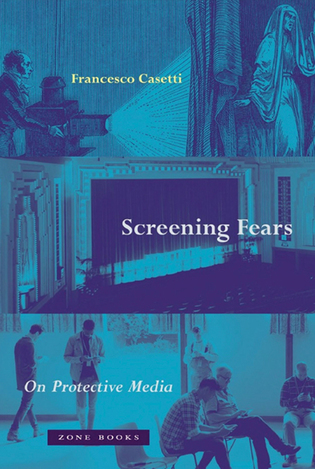
For several decades, modern media technologies, whether television, computers, or smartphones, have been understood as ways to reach out—and expose ourselves—to the world, often in ever more intrusive ways. But in his book Screening Fears: On Protective Media, Francesco Casetti, the Sterling Professor of Humanities and Film and Media Studies, has a different take.
“Historically speaking,” he says, “modern media are basically protective, in the sense that they put a filter between us and reality, in order to deal with reality from a safe position.”
He found himself re-evaluating the commonly-held theory, which was popularized by Canadian academic Marshall McLuhan, after discovering a form of entertainment called the Phantasmagoria. This type of immersive and (for the time) high-tech theater developed in France, in the period of the French Revolution. It featured ghosts and apparitions, including revolutionary heroes who had been killed. That was a way, Casetti says, for viewers to experience terrifying realities—but safely.
It became a theme Casetti encountered again and again while examining the development of mass media, from the 1700s to today: media could act not as a way to bring a noisy, overwhelming, and often frightening world into our own lives, but rather as a way to protect against it.
This phenomenon, which he calls the “projection/protection complex,” is now even more the case, Casetti says. He’s observed everyday examples in his students. For instance, he says, they don’t like to receive a phone call; they want to receive a text first, as an extra layer of protection against the intrusion of the outside world.
Even selfies, commonly understood as examples of exposing oneself to the outside world, offer protection. “The need for someone to be looking at you is not narcissism,” he explains. Instead, it’s a bid for connection and contact, but in a way that mediates one’s anxiety—even though there’s another person, “a direct witness of what you do.”
It may sound paradoxical that at a time when media is so fast-moving and ubiquitous, we’re also using it as a kind of filter against the outside world. But he says that’s exactly the point. The more risk we perceive—often communicated through technology—the more we want to use those same technologies as protective barriers.
“We are at risk in this moment. Think about climate change, think about pandemics. It is a much more challenging world that we live in,” says Casetti. “We use media to protect ourselves.”
 loading
loading